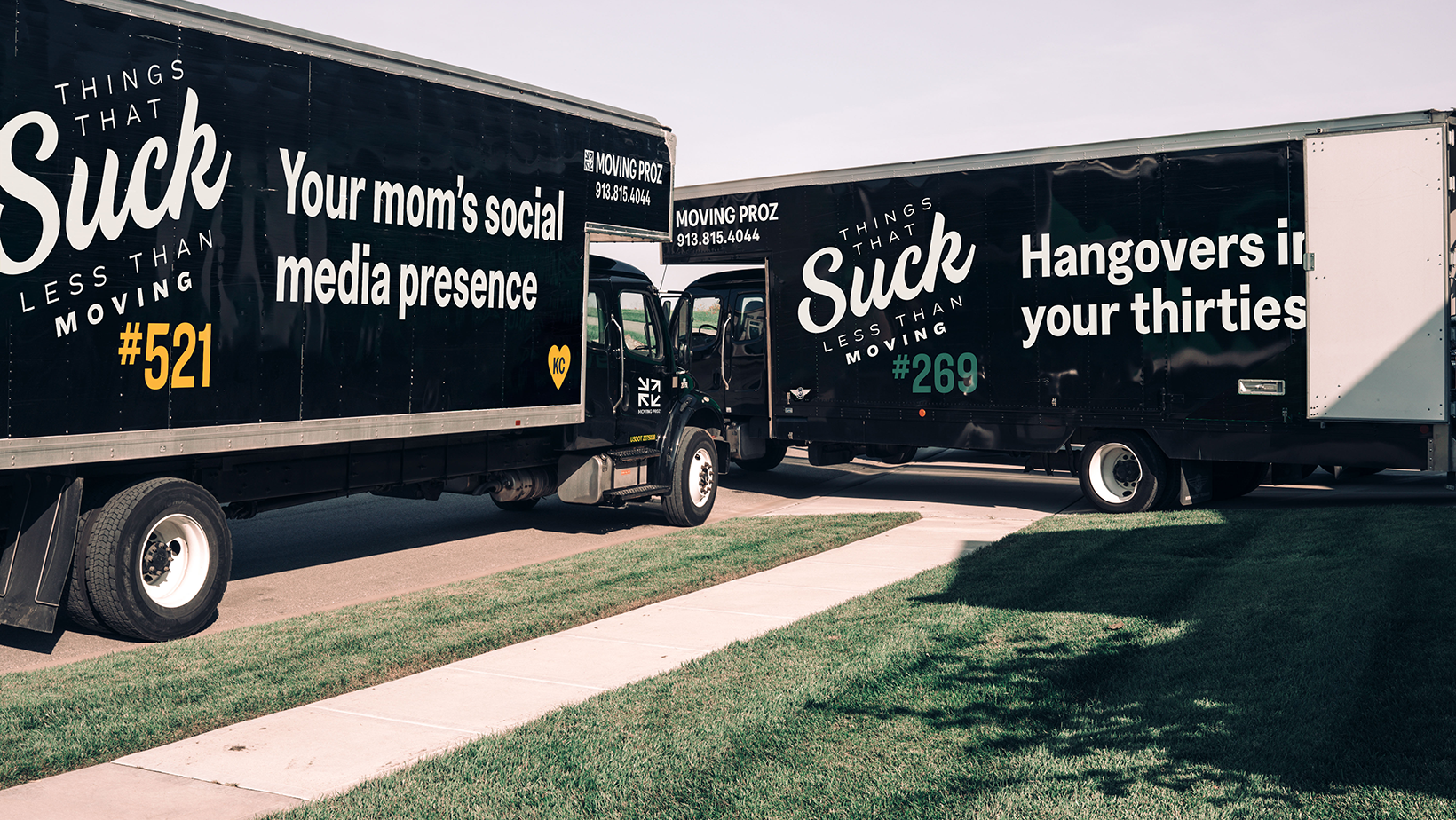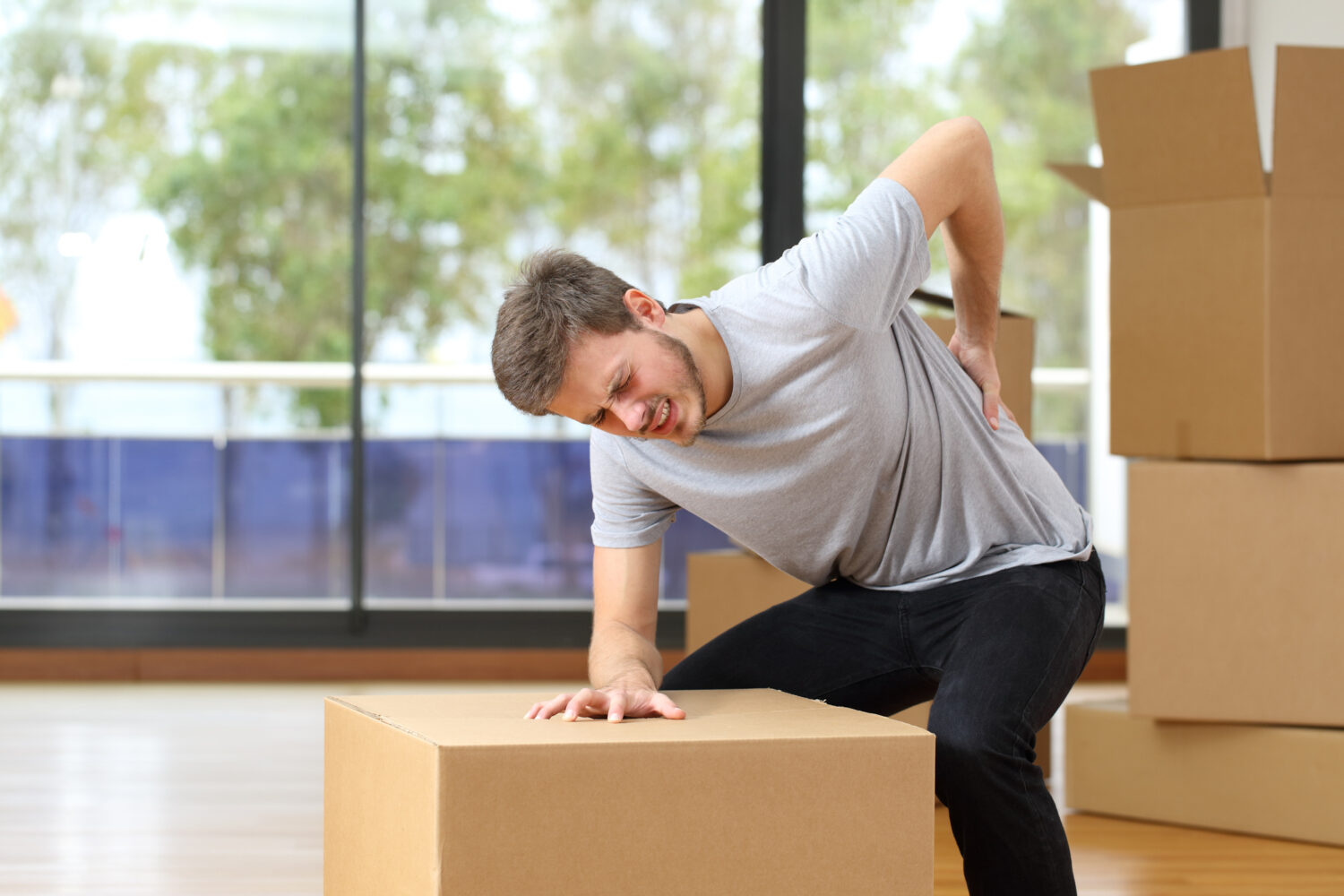We all know moving is difficult when you don’t have professional moving help. But it can also be backbreaking work, leading to injuries to yourself or others. A DIY move involves a lot of twisting, bending, lifting, pulling and heaving – all of which can lead to painful injuries ranging from back and ankle injuries to neck and shoulder injuries.
Thing is, moving injuries happen quickly, in the blink of an eye really, so many times you don’t see them coming because you’re stressed, rushed, or tired.
Fortunately, there are ways you can avoid these injuries when you employ proper lifting techniques, and when you hire a professional mover who comes with all the proper equipment to get it done right.
Types of Moving Injuries and How to Avoid Them
The most common include fractures, muscle strains and sprains, cuts and scrapes, and dislocated joints. Here are the top ones.
1. Back Injuries
All that bending and lifting puts stress on your back, making it very likely you could suffer a strain or sprain to the lower back. But in addition to simply tweaking a back muscle, you could also do more serious harm such as with a torn muscle or herniated disk, which can be very painful and require surgery.
Here’s how to avoid a back injury during a move:
- Lift the right way to reduce the strain on your back.
- Use moving equipment like straps and dollies.
- Keep boxes on the lighter side rather than the heavy side.
- Ask a friend to carry a heavy item with you to evenly distribute its weight.
- Know your limits and what you can safely handle.
2. Knee and Ankle Injuries
Knees and ankles are vulnerable joints that can easily snap, bend or sprain with heavy lifting and sudden twisting.
Knee injuries occur most often because they are the top joint in your body that does the most work. Stress and exertion can result in sprains, dislocations, meniscus tears or breaks. Slips, trips, and falls can lead to some pretty serious knee injuries that can lay you up for quite a while.
Ankle injuries are another top concern. It’s common to roll or twist an ankle when pulling or dragging heavy items, and it’s very easy to make a mistake with your footing. It’s no wonder that sprained ankles are at the top of the list when it comes to common moving injuries.
Here’s how to avoid knee and ankle injuries during moving day:
- Use team-lifting methods.
- Lift the proper way.
- Use the right tools and equipment.
- Don’t overexert yourself.
- Don’t overpack boxes.
- Wear sturdy shoes or sneakers with proper ankle support and grip.
- Wear kneepads and braces – to provide support to your knees and lessen the strain on them.
- Clear obstacles to reduce the possibility of tripping.
3. Shoulder and Neck Injuries
These most commonly arise from falls and overexertion. Neck injuries can include muscle sprains, pinched nerves, and even severe spinal injuries. Shoulder injuries can include dislocation, collarbone breaks and torn nerves.
Here’s how to avoid these types of injuries on moving day.
- Use precautions to prevent falls.
- Use proper moving equipment to reduce shoulder and neck strain.
- Take frequent breaks.
4. Broken Bones
Fractures are not quite as common as the above, but they can happen. The most common fractures during a move are broken or crushed fingers and toes (they can be smashed by boxes or slammed in doors).
To avoid these injuries…
- Wear gloves with good grip.
- Wear closed-toe shoes.
- Don’t overload boxes, and be sure to reinforce the bottoms so they don’t collapse.
Broken arms and legs are another possibility, such as if you fall down the stairs or a piece of furniture topples over on you.
5. Muscle Injuries
Cramps, strains, tears, and contusions are all common injuries during moving.
- Muscle strains: Also known as a “pulled” muscle, this is when the muscle has been overstretched or overused, leading to soreness, stiffness, swelling, weakness, and spasms. They are most common to the shoulders, neck, hamstring and lower back.
- Muscle tears: This is more serious because not only have the muscle fibers been torn, but the blood vessels have also been damaged. These most commonly occur to the lower back, neck, legs and shoulders.
- Muscle cramps: These happen when lactic acid during strenuous activity accumulates, leading to spasms of the calves, thighs, or foot arches.
- Muscle contusion: Also known as a bruised muscle, this is when the muscle tissue and capillaries are damaged as a result of trauma without the skin being broken.
- Torn ligaments and tendons: These lead to pain and swelling.
You can avoid these types of muscle injuries by:
- Stretching and exercising beforehand to keep your muscles elastic.
- Stay hydrated.
- Take frequent breaks to rest your muscles, ligaments, and tendons.
- Use proper moving equipment.
6. Hernias
Hernias are tears or ruptures within the abdominal wall that occur from tissue weakness or strain. Hernias are common during moving because they often result from lifting heavy objects. Use the same safety precautions as above to avoid hernias, such as keeping boxes light, asking for help when lifting, and using equipment like dollies to do the brunt of the work.
7. Cuts and Scrapes
Cuts and scrapes are the most common moving injuries, but thankfully they’re not as serious as the rest. Keep some bandages and antiseptic on hand to clean and cover any cuts or scrapes that may arise from sharp edges or boxes, tools, kitchen items, or glassware. You want to avoid a graze, scratch, laceration, or open wound.
You can also:
- Wear protective equipment like work gloves and clothing like long pants, long-sleeved shirts and closed-toe shoes.
- Safely pack sharp items.
The best way to avoid all of these injuries, of course, is not to engage in heavy lifting, pulling or hauling at all. Hiring a professional mover to handle all the heavy stuff is smart, helping you avoid injury and making moving day go more smoothly.
Contact Moving Proz
To get started, call us or go online for a free moving quote. We bring all the right equipment to ensure the job is done correctly and safely, with minimal injury risk and damage to your surroundings.

